Finally in March 2015 I got an opportunity to go and sail two of the single handed designs that are gaining traction in the traditional Laser, 'medium weight single handed sailor market': RS Racing's Aero and Devotti's D zero.

I guess I have heard the buzz about each of the two boats in question. I was really keen to do a straight test in conditions where I could compare my experience in the Laser® directly with these two new kids on the block.
Thankfully I had not yet stepped into either of these boats before. We had a good 20 knots, with occasional gusts of 25. Air temp was 8 degrees with some foul tide (more upwind than downwind). The venue was Stokes Bay Sailing Club.
Stokes Bay is normally quite an easy place to launch a Laser in these conditions. I say easy, because if you know what to do, you can do it pretty much on your own, so I was intrigued to see how it was to be with two much lighter weight boats in the same conditions.

For my first launch in a D zero, I left its rudder blade up, just inside the rudder cassette. The boom does not effect the rudder, so it is 'safe as houses'. My preconception was that it was going to be tricky to push the rudder down when sailing and gain steerage at slow speeds. However, I was surprised to find that once I had put the centreboard in the boat, and used it to hold the boat head to wind in the waves from the transom (I do this by pushing the transom left or right to keep the bow head to wind. I might walk a little down the beach to achieve this but you can quickly get a feel for where the neutral place is. This method keeps the bow into the waves and the rig over the boat) From this standard lee shore starting position, I was able to put the rudder almost fully down and jump over back into the cockpit.
No tillers or downhauls, it felt very simple and easy. As the boat is very very low on water-line there was no stress trying to hold the boat in the waves, but it could've done with a neat handle on the bow to help pull the boat off the trolley into the wavs. I did not really miss the lack of gunwhale. I quickly worked out that the rig was a mainsheet boat, a bit like sailing a Europe. There was a cleat on the side tank that took all the mainsheet loads.
I could pull hard on the cunningham to turn the big rig into a puppy, it would self adjust and take the gusts in its stride. I also quickly realised that the traveller has a restrictor that I eased to take the boom to the corner; probably a good thing as I am only 73Kg - and this rig was pretty big in the waves of Stokes Bay. I settled in upwind on starboard. The waves were pretty much straight on as they were bending into the bay on the starboard close hauled. They were slightly awkward to handle, occasionally killing my speed, but when I tacked onto port, the waves were a little more side-on and my speed was much more consistent. I found it a challenge to keep up with the Aero upwind with its 78Kg sailor and the 7m sail. I was in the standard D zero rig, with somewhere over 8 sq. m and I weigh in at 73 Kg - so it was not really surprising that I rounded just behind the Aero. Perhaps I would be more suited to the D Zero Blue (6.9 sq. m) in these conditions.
 The run was exciting. The internal layout gave me the right areas to push off to make hull steering feel effortless. The underwater shape was encouraging me to take the angles. As a Laser sailor who works very hard to get my Laser to manoeuvre, I normally feel like I am dancing with Anne Widdecombe, but now the the D - Zero was eager and responsive, my new dance partner was more like Caroline Flack.
The run was exciting. The internal layout gave me the right areas to push off to make hull steering feel effortless. The underwater shape was encouraging me to take the angles. As a Laser sailor who works very hard to get my Laser to manoeuvre, I normally feel like I am dancing with Anne Widdecombe, but now the the D - Zero was eager and responsive, my new dance partner was more like Caroline Flack.
 Another beat to work out how to make the boat go upwind. I firstly eased the toestrap adjustment system that was at the rear of the cockpit. Although I would have liked a more complicated system with it leading to the front of the boat, I considered, that once I had it set for me, I was not really going to ever touch it again. More Cunnigham and perhaps a little less sheet tension and the top was twisting off nicely. I was still overhauled by the heavier sailor in the 7m Aero, but by slightly less this time. I was also thinking that I can't really complain - this was my second beat in this new toy.
Another beat to work out how to make the boat go upwind. I firstly eased the toestrap adjustment system that was at the rear of the cockpit. Although I would have liked a more complicated system with it leading to the front of the boat, I considered, that once I had it set for me, I was not really going to ever touch it again. More Cunnigham and perhaps a little less sheet tension and the top was twisting off nicely. I was still overhauled by the heavier sailor in the 7m Aero, but by slightly less this time. I was also thinking that I can't really complain - this was my second beat in this new toy.
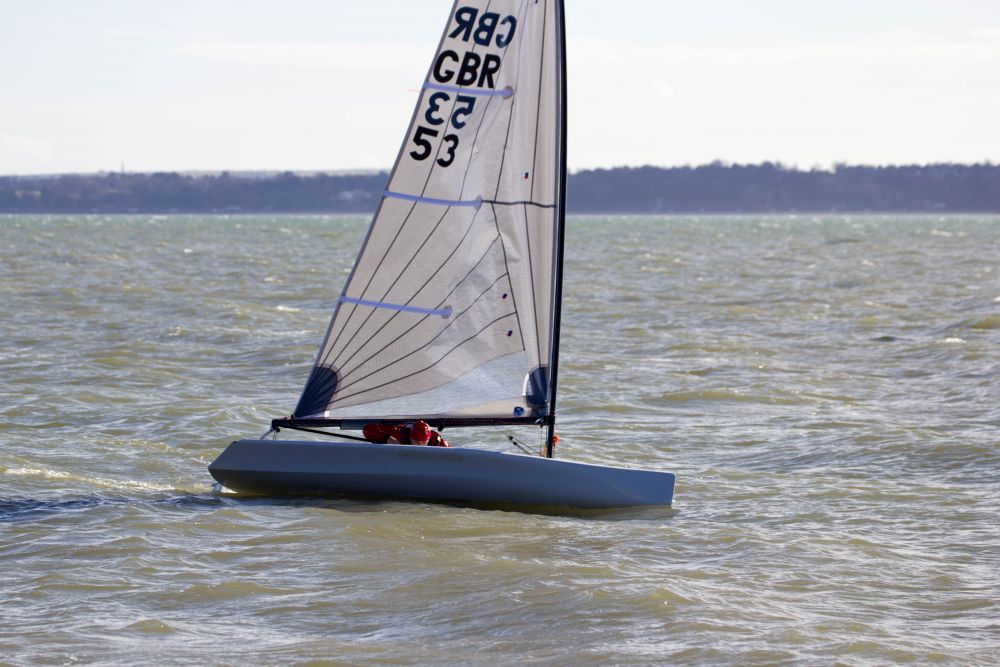 Tacking was easy despite the appearance of the low boom, as I only used the kicker as an off-wind control. So as I moved across the boat - the boom easily cleared. I would say much easier than a Laser® with the vang hard on. We then set off for a short reach. Knowing that the back of the boat has a large flat planing area, I quickly moved to the very back of the boat - and she flew, extending massively on the Aero. If I had not taken this standard advice to move backward in the reach - I was sure that I would have put plenty of waves over the bow. To test this theory I moved forward; sure enough the boat took a steady stream of water over the bow, but never quite like a "Laser® style cockpit filling and stopping aquarium" experience. More like - "what are you doing near the front of the cockpit!?! - move back!" experience. I found the last short downwind to be smooth; I continued to weave my way downwind which was both exciting and rewarding. Go Caroline Flack. At this stage I felt more like a downwind Anton du Beke.
Tacking was easy despite the appearance of the low boom, as I only used the kicker as an off-wind control. So as I moved across the boat - the boom easily cleared. I would say much easier than a Laser® with the vang hard on. We then set off for a short reach. Knowing that the back of the boat has a large flat planing area, I quickly moved to the very back of the boat - and she flew, extending massively on the Aero. If I had not taken this standard advice to move backward in the reach - I was sure that I would have put plenty of waves over the bow. To test this theory I moved forward; sure enough the boat took a steady stream of water over the bow, but never quite like a "Laser® style cockpit filling and stopping aquarium" experience. More like - "what are you doing near the front of the cockpit!?! - move back!" experience. I found the last short downwind to be smooth; I continued to weave my way downwind which was both exciting and rewarding. Go Caroline Flack. At this stage I felt more like a downwind Anton du Beke.
 To come ashore I pulled the rudder up slightly. It was not too hard to lean over the transom. Then I wondered if I could "drop the knot" on this new boat. I had not tied an easy knot to grab, so I found myself breaking all the rules. Coming head to wind a few boat lengths from the shore, then backing the boat to the beach by pushing the boom to the wind and steering backwards before jumping out.
To come ashore I pulled the rudder up slightly. It was not too hard to lean over the transom. Then I wondered if I could "drop the knot" on this new boat. I had not tied an easy knot to grab, so I found myself breaking all the rules. Coming head to wind a few boat lengths from the shore, then backing the boat to the beach by pushing the boom to the wind and steering backwards before jumping out.
I was quite amazed that I did not mess this up, but the hull offers so little windage, she was doing exactly what the sails and foils were telling her. Now for a quick swop. At first glance, the Aero's controls had been improved greatly from the initial pre production boat at the 2014 Dinghy Show. The kicker was easy to hand, if a little hard work to pull on. The Cunningham and outhaul were led to each side deck with take ups disappearing. I did not know just how long the tails were or if I was about to run out on one side, but I never did hit the stops during the test. The boat instantly felt bigger than the D zero. That was strange as I thought it as a shorter boat. But upwind the bow shape made light work of the chop.
 The mainsheet was taken straight from the ratchet block; I guess the loads are reduced by the vang tension, but I am lazy and like to cleat my sheet sometimes. Once again the smaller rig made lighter work of the wind now approaching 22 knots. When I tacked I found moving off the deck easier in the Aero - but for some reason, I always seemed to over tack and generated some excess heel. Perhaps the boom allowed me to be lazy, perhaps the extra windage of the hull was interacting more, I am not sure. Still I rounded just behind the heavier sailor in the D zero for the first run.
The mainsheet was taken straight from the ratchet block; I guess the loads are reduced by the vang tension, but I am lazy and like to cleat my sheet sometimes. Once again the smaller rig made lighter work of the wind now approaching 22 knots. When I tacked I found moving off the deck easier in the Aero - but for some reason, I always seemed to over tack and generated some excess heel. Perhaps the boom allowed me to be lazy, perhaps the extra windage of the hull was interacting more, I am not sure. Still I rounded just behind the heavier sailor in the D zero for the first run.
 The Aero was very stable and took the downwind easily whether I opted for wave avoidance or just took her straight downwind by the lee. Pretty much predictable downwind sailing. You might find a hint of disappointment in my words, as I do like to do a bit of a dance, and this reminded me of dancing with Judy Murray - sportie robust but rather stiff. Now I know that I am perhaps not the average downwind sailor and that sporty robust is exactly what much of the sailing public are looking for. I think that is exactly what the RS team were looking to design and they have hit the nail on the head.
The Aero was very stable and took the downwind easily whether I opted for wave avoidance or just took her straight downwind by the lee. Pretty much predictable downwind sailing. You might find a hint of disappointment in my words, as I do like to do a bit of a dance, and this reminded me of dancing with Judy Murray - sportie robust but rather stiff. Now I know that I am perhaps not the average downwind sailor and that sporty robust is exactly what much of the sailing public are looking for. I think that is exactly what the RS team were looking to design and they have hit the nail on the head. Second beat - and now with more kicker - again pretty hard work pulling it on, I am not sure if it was not as hard or harder than a laser vang , more Cunningham and we were back in control for another upwind. Again rounding behind my heavier sailor in the D zero we were off for a reach.
Second beat - and now with more kicker - again pretty hard work pulling it on, I am not sure if it was not as hard or harder than a laser vang , more Cunningham and we were back in control for another upwind. Again rounding behind my heavier sailor in the D zero we were off for a reach.  Now touching 25 knots, the Aero was well behaved and I could have sat lazily in the middle of the boat and been in control, but I moved to the very back of the boat to find a helpful aft strap - and we went supersonic. The last bear away for the run back to the shore, I tried to loosen up this stiff sporty dancer. Yes she was starting to loosen up, but I found the mainsheet too short and the knot restrictive for reverse sheeting by the lee. Once I had untied the knot on the toe strap I was able to test the by the lee edges more. There really was no fuss. She did as she was told but it was not quite the dance of the D Zero.
Now touching 25 knots, the Aero was well behaved and I could have sat lazily in the middle of the boat and been in control, but I moved to the very back of the boat to find a helpful aft strap - and we went supersonic. The last bear away for the run back to the shore, I tried to loosen up this stiff sporty dancer. Yes she was starting to loosen up, but I found the mainsheet too short and the knot restrictive for reverse sheeting by the lee. Once I had untied the knot on the toe strap I was able to test the by the lee edges more. There really was no fuss. She did as she was told but it was not quite the dance of the D Zero.  Coming ashore I was able to drop the knot; it was easy as it was just above the ratchet block on the boom. The rig however, needed me to reduce the vang tension to help the boom to relax over the bow. No stress and we were out of the water. My conclusion: If you are looking for an predictable ride with some fast reaching - then the Aero is your toy. If you are looking to test your dancing shoes for downwind racing - then the D zero is your toy. I guess its not surprising that ex competitive Laser® sailors like the D zero whereas the the Aero meets many of the requirements of the club sailor fleets. I do like the way the D zero tells you that you are doing it wrong and encourages you to do it right, but perhaps I am always the teacher. My concern is that both might still be lacking in the international flavour offered by the Laser fleet, although the beauty of the Laser was that charter boats would be cheap and available at any major regatta; this years Master' Worlds, charter boats are £1000 each. Perhaps they are trying to squeeze out the last golden eggs?
Coming ashore I was able to drop the knot; it was easy as it was just above the ratchet block on the boom. The rig however, needed me to reduce the vang tension to help the boom to relax over the bow. No stress and we were out of the water. My conclusion: If you are looking for an predictable ride with some fast reaching - then the Aero is your toy. If you are looking to test your dancing shoes for downwind racing - then the D zero is your toy. I guess its not surprising that ex competitive Laser® sailors like the D zero whereas the the Aero meets many of the requirements of the club sailor fleets. I do like the way the D zero tells you that you are doing it wrong and encourages you to do it right, but perhaps I am always the teacher. My concern is that both might still be lacking in the international flavour offered by the Laser fleet, although the beauty of the Laser was that charter boats would be cheap and available at any major regatta; this years Master' Worlds, charter boats are £1000 each. Perhaps they are trying to squeeze out the last golden eggs?
Post test note:
I made the following adjustments to the standard boat to win the worlds in 2017:
I added a Tapered Kicker Control Line for an Aero which made adding kicker much easier.
I increased the length of the mainsheet and used 7mm Polilite so I could use the angles downwind. See Aero Mainsheet. Its still the lightest and most tangle free sheet on the planet.
During the regatta I finally developed Rooster's Aero Over Deck Control System.
And of course I used a Rooster Carbon Tiller Extension for an Aero.
I also found that the halyard was a pain to pull up through the mast fairlead so I made an Aero Halyard Loop which worked a treat.




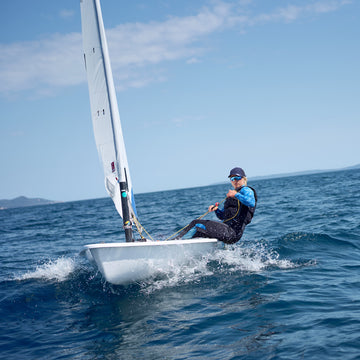
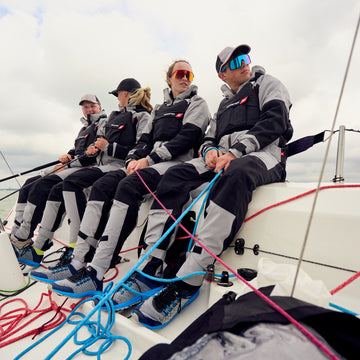
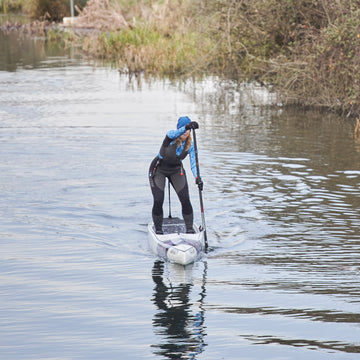
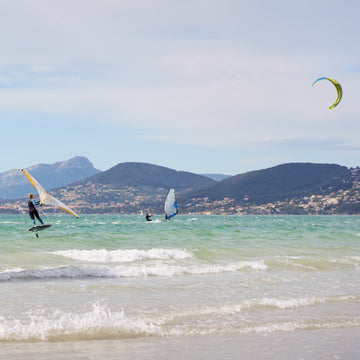
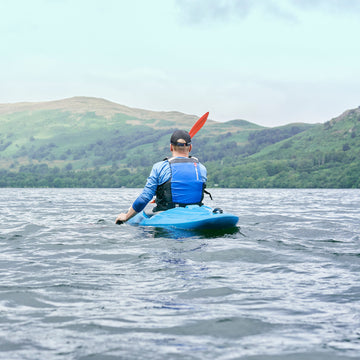
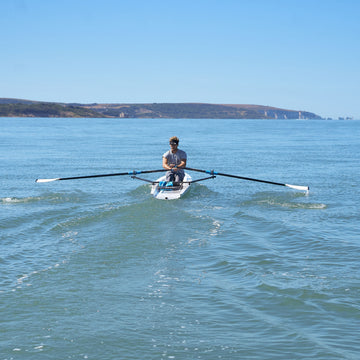
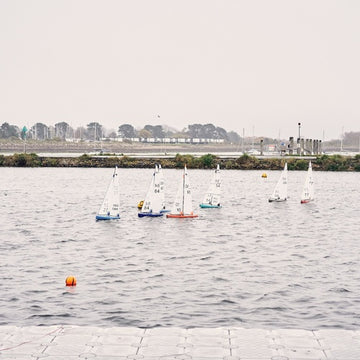
 Select Store
Select Store
 US
US
 UK
UK

